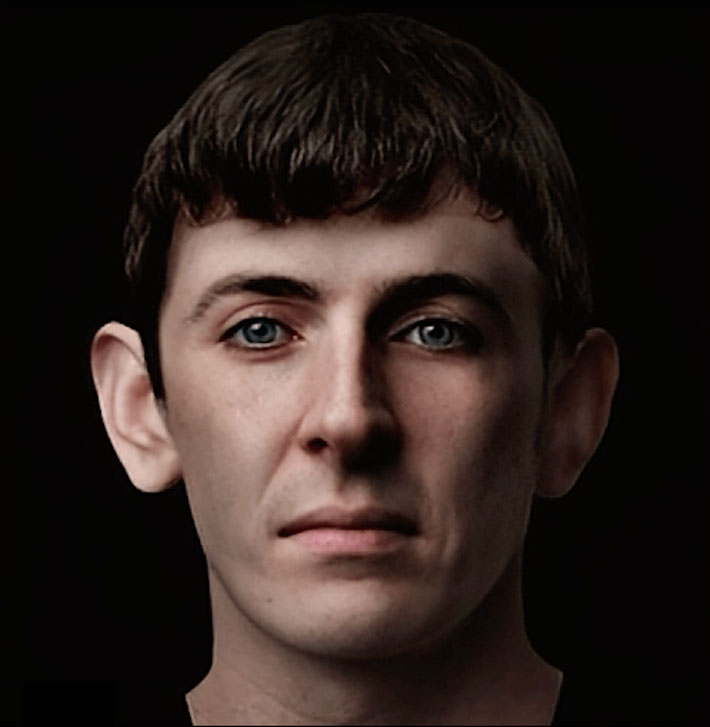 PERTHSHIRE, SCOTLAND—The Guardian reports that the faces of four people whose remains were uncovered in central Scotland have been recreated by forensics and facial reconstruction expert Chris Rynn, with information obtained through the analysis of DNA, the chemical composition of bone, radiocarbon dating, and reconstruction forensics. The first digital reconstruction reveals a medieval man thought to have been killed by a traumatic injury between the ages of 18 and 25. His remains were found in a small, hastily dug pit. “He could have been stomped on by a horse or bludgeoned in the chest with some sort of mace-like object,” said bioarchaeologist Marc Oxenham of the University of Aberdeen. The second, a Cistercian nun who lived in the sixteenth century, likely limped from a broken foot. The face of a Bronze Age woman whose remains were found in a farmer’s field in 1962 represents the third reconstruction. She is thought to have been between 30 and 40 years old at the time of death, and she likely had lower back pain. Signs of trauma to her forehead may have caused her demise. The last reconstruction depicts a Pictish man who moved to central Scotland later in life and died in his 40s between A.D. 400 and 600. The analysis of his remains suggests that he grew up on the west coast of Scotland, or possibly in Ireland, ate a diet largely of produce, and suffered from osteoarthritis probably brought on by heavy agricultural work. The portraits will be displayed at the Perth Museum. For more on the Picts, go to "Letter from Scotland: Land of the Picts."
PERTHSHIRE, SCOTLAND—The Guardian reports that the faces of four people whose remains were uncovered in central Scotland have been recreated by forensics and facial reconstruction expert Chris Rynn, with information obtained through the analysis of DNA, the chemical composition of bone, radiocarbon dating, and reconstruction forensics. The first digital reconstruction reveals a medieval man thought to have been killed by a traumatic injury between the ages of 18 and 25. His remains were found in a small, hastily dug pit. “He could have been stomped on by a horse or bludgeoned in the chest with some sort of mace-like object,” said bioarchaeologist Marc Oxenham of the University of Aberdeen. The second, a Cistercian nun who lived in the sixteenth century, likely limped from a broken foot. The face of a Bronze Age woman whose remains were found in a farmer’s field in 1962 represents the third reconstruction. She is thought to have been between 30 and 40 years old at the time of death, and she likely had lower back pain. Signs of trauma to her forehead may have caused her demise. The last reconstruction depicts a Pictish man who moved to central Scotland later in life and died in his 40s between A.D. 400 and 600. The analysis of his remains suggests that he grew up on the west coast of Scotland, or possibly in Ireland, ate a diet largely of produce, and suffered from osteoarthritis probably brought on by heavy agricultural work. The portraits will be displayed at the Perth Museum. For more on the Picts, go to "Letter from Scotland: Land of the Picts."
Faces of Scots From the Past Recreated in Digital Portraits
